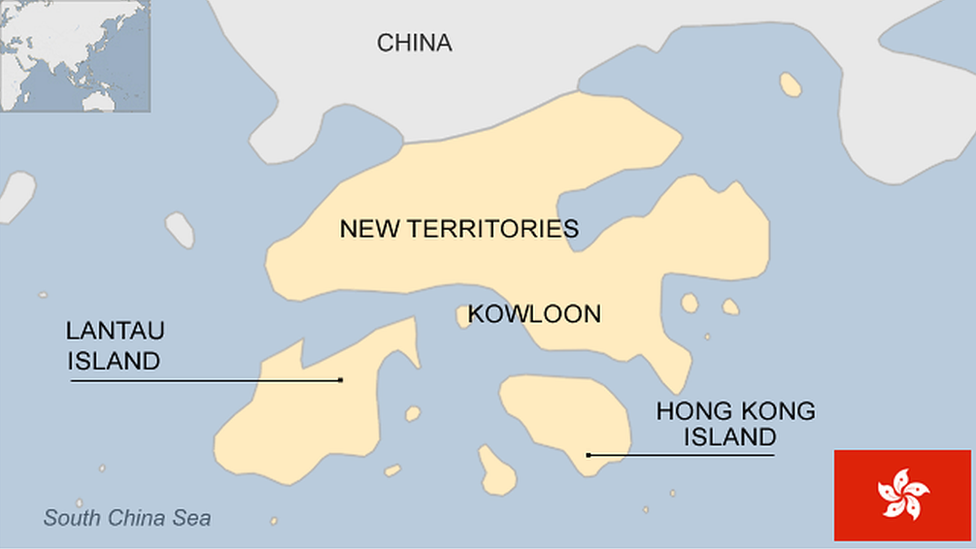Hong Kong tensions rise over 'parallel traders'
- Published
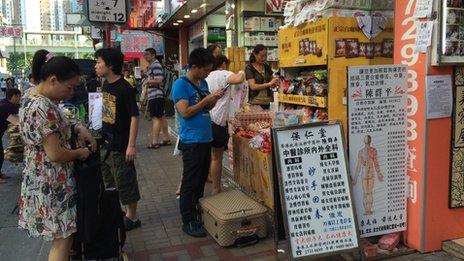
Inside a narrow, dim alley in the Hong Kong neighbourhood of Sheung Shui, about a dozen small shops sell packaged foods, infant products and personal care items such as shampoo.
A tin of chicken bouillon powder sells for HK$15 ($1.94; £1.14).
A sign displaying the price also states each tin can be sold across the border in the mainland Chinese city of Shenzhen for HK$17, for a profit of HK$2.
On a recent weekend, a steady stream of buyers from mainland China, called parallel traders, crowded around the shops to purchase boxes of chicken powder and other items, including toothpaste and red wine, to sell for profit back home.
"They think Hong Kong is a supermarket," says Ronald Leung, shaking his head in disapproval.
Mr Leung, 38 and born and raised in Hong Kong, volunteers with the North District Parallel Imports Concern Group.
"But we're not just a supermarket for China. Hong Kong should be a city for Hong Kong people."
"Parallel traders" purchase their supplies in Hong Kong, which does not charge a goods and services tax, and take them across the border to mainland China in small quantities to avoid paying import duties.
They, as well as Chinese tourists in general, have drawn the ire of parts of Hong Kong society ahead of the 1 July anniversary, when the former British colony rejoined China in 1997.
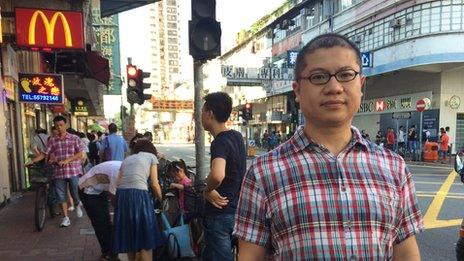
Ronald Leung has complained about the effects growing numbers of Chinese tourists are having on Hong Kong
As both sides have integrated financially, their economies have flourished.
But resource competition between mainland Chinese and local residents in Hong Kong has also escalated, causing increasing tension and even elevating political risk.
Tourist surge
In 1997, only 2.3 million mainland visitors came to Hong Kong, mostly on business or in tour groups, according to the Hong Kong Tourism Board.
The numbers surged in 2003 when, in the wake of an outbreak of severe acute respiratory syndrome (Sars) in Hong Kong, the individual visit scheme was launched to boost the economy as part of the Mainland Hong Kong Closer Economic Partnership Agreement.
Initially, only residents in four cities in the southern Chinese province of Guangdong were allowed to apply for the pass, which allowed them to travel individually.
Soon the successful scheme was expanded and now covers all of Guangdong province, as well as another 28 cities including Beijing, Shanghai and Chongqing.
Mainland China is now the biggest source of tourists, including parallel traders, visiting Hong Kong.

Mainland China tourists in Hong Kong
In 2013, nearly 41 million mainland visitors came to Hong Kong, accounting for 75% of total tourist arrivals
More than half of them came for just one day
They contributed 34% to total retail sales in Hong Kong last year
The tourism industry as a whole contributed 3.9% to the economy in 2012

Winnie Chen, a native of the central Chinese province of Hunan, tries to visit Hong Kong once a year to eat, shop and soak in the city.
"I love Hong Kong. I don't go to the touristy places any more. I come here to enjoy life," she says, returning to her hometown by train and carrying cosmetics and skincare products.
She estimates she spends HK$1,000 a day on lodging and food, before shopping, and stays for just under one week.
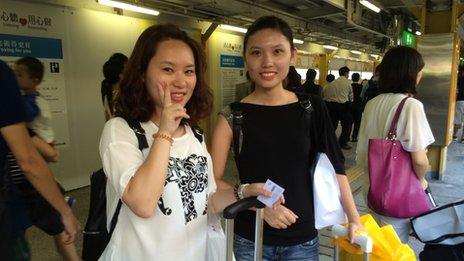
Winnie Chen (left) is one of the many regular visitors to Hong Kong from mainland China
Backlash
But over the past two years, the Hong Kong public, including Mr Leung's group, have begun to protest against the growing number of Chinese tourists.
They have complained about crowded public transport, rising prices and the changing face of traditional neighbourhoods, some like Sheung Shui, which have evolved to cater to Chinese tourists.
Last year, more than 54 million people came to visit. By 2023, arrivals may exceed 100 million, according to a conservative government estimate.
A senior government official recently told reporters the Hong Kong and Beijing governments were working together to address the issue.
Hong Kong Chief Executive CY Leung surprised the public in May, when he said government officials had discussed a proposal to reduce the number of mainland Chinese visitors by 20%.
More recently, news reports have suggested the owners of multiple entry permits, usually residents of Shenzhen, may be restricted to 52 trips a year to Hong Kong, or approximately one trip a week. They are believed to form the bulk of parallel traders.
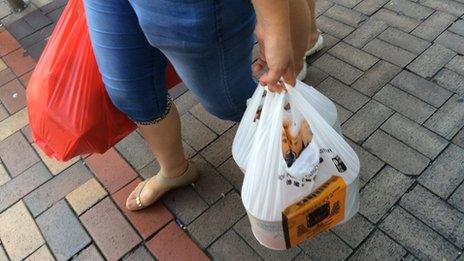
Visitors from mainland China accounted for a third of all retail sales in Hong Kong last year
The Sheung Shui neighbourhood has become a centre for parallel trading because it is located just one stop away from the border on the train to Shenzhen.
The area has about 60 drugstores selling infant milk powder, nappies, medicines and personal care products, catering to traders from China.
Political risk?
Economists at the investment bank Goldman Sachs believe Hong Kong may lose $2-3bn in annual retail sales, if the government cuts Chinese arrivals by 20%.
But their counterparts at ANZ Bank believe the economic impact could be far worse.
"It will send a wrong signal that Hong Kong will no longer welcome mainland tourists. This intangible damage is uncountable," they wrote in a research report.
ANZ economists said the owners of commercial property and other facilities would be likely to see declines in their rental income, though they did not provide estimates.
They added: "The concern highlights a risk of policy bungle when the government tries to compromise with the growing populism over mainland-Hong Kong economic integration."
The Hong Kong government is yet to unveil a plan to limit mainland Chinese visitors, but many in the tourism industry are expecting an announcement soon.
Seventeen years after Hong Kong returned to China, their economies are much more intertwined, but tension between the two sides seems to be growing too.
- Published23 June 2014
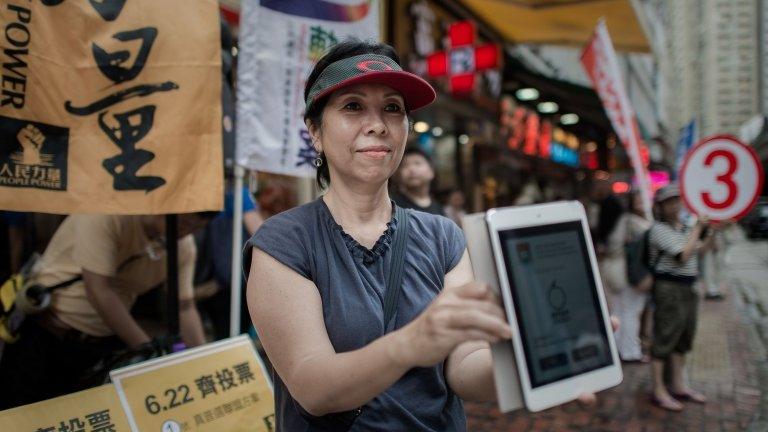
- Published29 May 2014

- Published7 January
